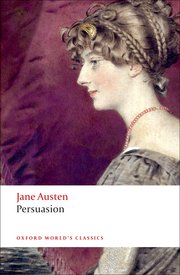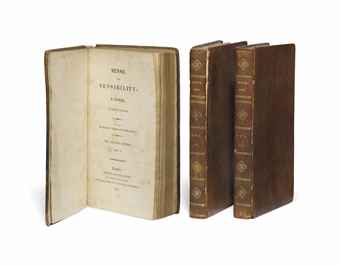
The trailer was a travesty – many people I know said that alone convinced them to not watch this new Persuasion, now streaming on Netflix since last Friday. There have been so many negative reviews, one can only lament all the money spent, all the talent squandered, and settle for visions of Dear Jane doing the proverbial role in her grave…
BUT, I say, give it a chance, watch it with an open mind, pretend you are an Austen newbie and look at it all with not-so-knowledgeable eyes – can you do this and find some redeeming moments that somehow harken to the original story??
I didn’t read any of the reviews before viewing it the other day [on my computer I confess because I am on the road with no Netflix on a bigger screen – though I don’t think the smaller screen affected my liking / disliking the movie…] – I didn’t want to be swayed, though the headlines alone were enough to know how the wind blows – it is FASHIONABLE now to dislike this movie, and so it goes, one after the other of people weighing in on this great mess.
Bottom line is that I neither loved nor hated it, but I fall somewhere in-between, finding that spending a bit of time with Jane Austen, despite the various missteps, is always a fine way to while away an afternoon…
I shall make a list of the pros [a few] and cons [a lot], the best way to approach this rather than a full-on review, because I think most of us will say the exact same thing. I should start by saying that Persuasion has long been my favorite Austen novel – I love the story, the romance of second chances with the pain of Anne suffering through eight years of longing and regret with the subtle hints that Wentworth has suffered likewise. I love Austen’s usual satirical eye on class distinctions, and those not willing to see a changing world of honor and merit. And Austen’s ever-present humor – are there any better characters than Sir Walter Elliot and Mary Musgrove and Austen’s take on the ridiculous snobbery of the lot of them?
A few friends have already shared their very strong feelings about this film – I am reminded of the horror that first accompanied the 2005 Pride and Prejudice with Keira Knightley and Matthew MacFadyen – PIGS in the kitchen! Mr. Darcy has a mullet [and chest hair!]! Elizabeth Bennet looks too much like Keira Knightley! [i.e. too modern for the early 19th century] – it went on and on…and so we are here once again with complaints that THIS MOVIE IS NOT THE BOOK! But one friend, who is not an Austenhead, found the movie “quite enjoyable,” despite Capt. Wentworth “a little sappy” [can anything work if Wentworth is “sappy”??] – so it comes down to what you know – have you read the book? Have you seen the 1995 film with Amanda Root and Ciaran Hinds [in my view the most perfect of all the Austen film adaptations]? Do you know your Austen backwards and forwards and can quote her willy-nilly in appropriate conversations? [my favorite: “Elinor agreed to it all, for she did not think he deserved the compliment of rational opposition.” (S&S).] Do you get / appreciate the narrative voice that brings that ironic humor to all her writings? And on it goes…
Any adaptation is just one person’s vision of their Jane Austen [well, along with producers, screenwriters, directors, actors, etc.!]– there will never be one size that fits all. Your Captain Wentworth will not be MY Captain Wentworth. But, I’m a firm believer in any Austen film that brings people to the books, and if this 21st century version of Persuasion can do that for a whole new generation, then kudos all around. These new readers will be pleasantly surprised how deep and meaningful the novel is in comparison [or they’ll throw it across the room in disgust at the long wordy sentences and lack of any kissing…]
So, onto my lists: [SPOILERS ABOUND!!]
The PROS:
1. The Narrator: the use of a voiceover or Dakota Johnson speaking directly to the viewer serves to bring Austen’s all-important narrative voice into the tale. So much in the book cannot be conveyed via dialogue, and I understand the screenwriter using this device to solve the problem [the major Con is that too often Anne is saying / doing things that are not in the text at all, and not Anne-like in the least – more on this in the CONS] – but I like this aspect of being able to get inside Anne’s head – this is her story after all…past, present, and future.
2. The Settings: magnificent as expected, Kellynch Hall just lovely, landscape scenery perfection [Sir Walter’s concerns about his “shrubberies” are valid!]; Lyme Regis and Bath locations [not enough of Bath in my view] serve the story well…and I would like to visit the Harville house, the Elliot home in Bath, and the Bath shop once again… [you can view the various locations here: https://www.apartmenttherapy.com/netflix-persuasion-filming-locations-37107090 ]
3. The Fashions: I liked the simplicity of all, especially Anne’s – a complete 180 from the over-the-top costumes on the 2020 Emma. These understated fashions seemed more realistic but likely not as engaging for all the Austen fashionistas out there.
4. The Dialogue: this is mostly a CON as you will see, but I must give applause to those very few lines that were taken directly from the novel [what a novel idea!]

5. The Casting: I applaud the casting without any complaint. Dakota Johnson, seemingly in EVERY scene, is so lovely to look at [more on her HAIR below, a giant quibble]; I liked Cosmos Jarvis as Wentworth [despite my friend’s “sappy” comment], though will say he didn’t seem distant or angry enough; Henry Golding gets high praise for his William Elliot, just not caddish enough in my book; the color-blind casting worked perfectly – thank goodness this is a barrier well-hurdled in many recent productions [Bridgerton for one; Mr. Malcolm’s List as another (not yet seen – I have read the book and hope to not be disappointed!)] – and high praise for Mrs. Russell and Louisa [absolutely lovely!]. Richard E. Grant was perfectly and vainly odious as Sir Walter – I wish he had had more screen time…

6. Some of the scenes:
– Wentworth taking the boys off Anne in the woods [in the parlor in the book, but I won’t quibble] – the point is Wentworth was around and saw Anne in distress and acted.
– the Crofts and their carriage: Wentworth asking for them to take up Anne – a lovely scene, again showing that he is paying attention to Anne – but he doesn’t HELP her into the carriage and he should have!
6. The Soundtrack: The final song by Birdy is terrific [though very popular culture like Johnny Flynn and his “Queen Bee” in the recent Emma] – conveys the story better than the whole movie really – and the rest by Stuart Earl is engaging enough – you can listen to it here: https://www.youtube.com/watch?v=6BvDswoUAtk [I include the lyrics to the Birdy song below]
CONS: [hold on to your hats…]
1. The Language: ok, unless I missed something, this is a movie of the Jane Austen novel Persuasion. I think I counted no more than 10 direct lines from the novel, so much else made up that I thought we were watching some dime-store novel of historical fiction whose author didn’t do their homework and is stuck in 2022 after all – a few examples of many:
– the endless rating of both men and women on the 1-10 scale – really?? I thought that came into being with Dudley Moore’s “10” in 1979. Mrs. Clay, “a 5 in London, a 10 in Bath” [obviously William Elliot certainly thought so]
– Mary Musgrove, down and out with a “bug” deems herself an “empath” – good lord, what can be said, though I did laugh out loud…she was a great whiner, as she is on the page, but I just wanted to slap her…[well, I want to slap Mary in the book too…]
– Anne’s constant talking, to herself, to the wall, to her ever-present rabbit [a rabbit???], to the viewer: I realize the writers wanted to convey Anne’s inner thoughts, her sufferings, her regrets, to give us an Anne who tells it all, like she is in some endless therapy session that just lets her natter on and on – but where is the Anne on the page who suffers in silence, who gradually develops an inner strength and confidence that in the end enables her to speak out loud and clear in the only way she can, to an overhearing Capt. Wentworth… sometimes I just wanted her to shut up… [caveat: there were a few times that I thought the script did a fine job of conveying Anne’s inner life, “her quiet dignity” as she calls it, holding it together in her bathtub…]
– the use of clichés: “abandon all hope”; “hope springs eternal”… the list is endless; Mary as “shockingly self-aware” (says Anne)
– Wentworth telling Anne: “You’d make a great Admiral” – such a ridiculous comment, I have no comment…
– the whole “exes” and “friends” thing – way too modern chat
-Anne summing up William Elliot: 1. ‘He must have an angle” [when did that come into general use??]; 2. “He’s a 10” – a running gag that gets old…
2. The Conversations and Scenes: ok, here is where the movie lost me – there were far too many extreme divergences from the original text [I think it’s a book called Persuasion] – and I wonder who sits around at night and makes this stuff up:
– Anne blurting out at the dinner table that Charles wanted to marry her first… [now in the book, Wentworth learns this from Louisa with Anne overhearing – she is mortified that Wentworth would once again rail against her persuadability” – there is NO reason for Anne to share this with the dinner table – it was embarrassing for all [including the viewer]
– The octopus story: does this have a purpose?? “You’re beginning to grow on me”… I remain completely clueless.
– Louisa turning into a courtship instructor! – then snagging Wentworth for herself after a conversation with Anne – none of this is in the text, other than a subtle sense that Anne wants nothing to do with the captivating Captain…
– Anne and Wentworth meeting on the beach in Lyme for a conversation that is entirely made up – they stumble over words and end up becoming “friends,” both dissatisfied with being unable to express their true feelings – not only is it made up but it is much too early in the story to give this all away – and then Anne takes a dip in the sea, fully clothed no less, floating as she has done before in the bathtub – this is so un-19th-century!
– Mr. and Mrs. Croft are barely in the film – which is too bad, as their presence gives us much to understand about life in the Royal Navy AND what a good marriage looks like [not all that common in Austen!] – the conversation at the dinner table where Sophie tells of sailing with her husband and hating being left behind on land has been relegated to a quick conversation while walking – and too much is missed about the developing friendship between Anne and the Crofts.
3. The Characters; or how adding in some modern-day angst behaviors gives not-to-be-missed clues into each character [like the viewer cannot figure some of this out themselves?]:
– Lady Russell’s sexual adventures on the Continent?? How exciting for Lady R, but I doubt she would actually allude to this with Anne. And Lady R, who early on in the film says she was wrong to persuade Anne to give up the then Lieutenant Wentworth, never really sees that truth in the book – she continues to direct Anne to a better match.
– Anne peeing on a tree – certainly a nod to the Emma of 2020 warming her butt at the fire – but necessary??

– Anne in an almost constant state of intoxication, a wine-bottle always at hand; not to mention the bottle falling on her head – Anne-the-Klutz seems the order of the day: jam on her face just another example [though she is certainly more fun for those Musgrove boys than the sour Mary…]; slurping her drinks at the Dalrymple’s [and then that octopus story]…
– – Where oh where are the senior Musgroves?? I can barely recall their presence, they too important to the tale with their humor, over-the-top household…I miss them.

– In Lyme, the infamous fall – they used different steps than the “Granny” steps – was there a reason for this?? [though various illustrators have used the other steps as well] – I was pleased to see this kept in the film and it actually follows the book!
– Where oh where is Mrs. Smith?? A necessary part of the plot to understand the true colors of William Elliot – here we have him KISSING Mrs. Clay in Bath’s broad daylight, for all to see, and quite content in his film-ending marriage – someone really sat up late to come up with this one… a reformed cad – VERY un-Austen-like [none of her rogues are redeemed, as anyone who has read her novels knows.]
And then, The Letter – a quick conversation that Wentworth overhears, Anne having her last chance to tell him what she feels, and Wentworth leaving hastily written letter for Anne [or anyone else] to see – one is pleased to hear some of the letter verbatim [the best love letter in all of literature! – it deserves a reading!] – but then we have another Olympic Anne, running through the streets of Bath, frantically searching for her Captain – this a nod to the ridiculous Anne in the 2007 Persuasion, Sally Hawkins hysterical back-and-forth sprinting in search of her Captain – but I missed the quiet coming together of Amanda Root and Ciaran Hinds in the crazed streets of Bath, their un-Austen-like Kiss rocking the Austen world as completely inappropriate, but delicious nonetheless…
So, final answer?
I think it all lies in Anne’s HAIR: did Ms. Johnson just flat-out refuse to be Regencified?? No way she would succumb to the tightly wound Curly-Cue Curls of Anya Taylor-Joy? Her straggly mess just another sign of her depressive state seemed out of place and time, contributing to the feeling that Anne was just observing the rest of her 19th-century world but not really a part of it at all – the point I guess from this film’s standpoint, giving us an Anne E perhaps, who hopefully will be understood and beloved by a new generation, but certainly not the Anne Elliot of the Persuasion I know and love.

[But I did like seeing Wentworth still in uniform and teaching Anne the intricacies of the sextant – a fine future for these two, eight years coming, and finally happily there…] – in the end, I am really just a sappy romantic and not a very good critic…

Your thoughts?? [I could have gone on and on but I’ve said enough – now your turn!]
************
The Lyrics to “Quietly Yours”
White sails and off shore lights
We were passing ships in the night
Now I’m tracing shadows on your back
Like I dreamt so many times
Oh for so long I’ve been waiting
For so long, for a love like this
And I was so sure baby
I’d lost you for a minute but
There’s the sweetest
Spring at my door
Can you feel it?
Just the same as before
Many years have gone by
But I knew you’d come
Quietly keeping
This hope in my heart
Prayed the night bring
Back what I lost
Many years have gone by
But I never forgot
I’ve always been yours
Only yours
There was a time when I lеt you go
Allowed myself to be swayеd and pulled
But for all my days I make a vow
No words could ever shake me now
‘Cause for so long I’ve been waiting
So long, for a love like this
And I was so sure baby
I’d lost you for a minute but
There’s the sweetest
Spring at my door
Can you feel it?
Just the same as before
Many years have gone by
But I knew you’d come
Quietly keeping
This hope in my heart
Prayed the night bring
Back what I lost
Many years have gone by
But I never forgot
I’ve always been yours
Only yours
Quietly yours
Only yours
I’ve always been yours
Only yours (Yeah)
Quietly yours
Only yours (Yeah)
***********


















 You are Cordially Invited to JASNA-Vermont’s September Meeting
You are Cordially Invited to JASNA-Vermont’s September Meeting
































































